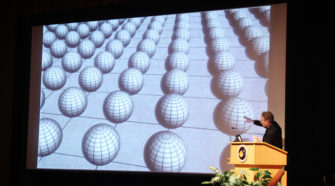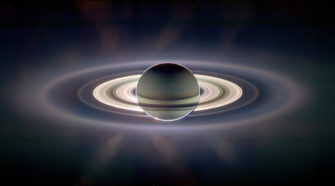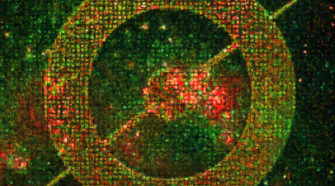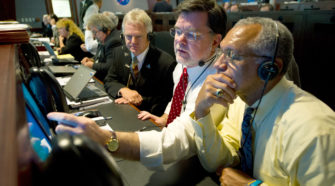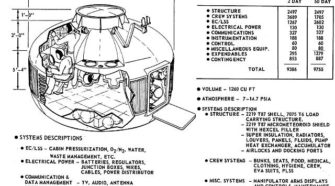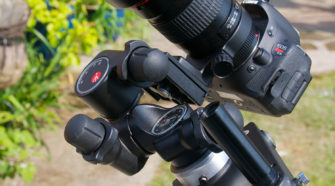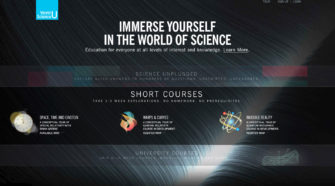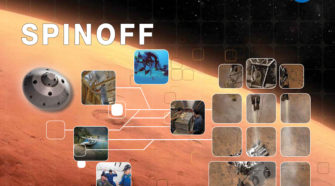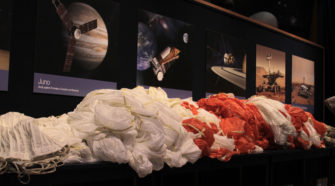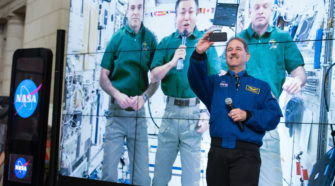Issue #7 (May 2014)
Brian Greene and the challenges of physics
Have you ever stared up at the night sky contemplating how the universe works? Have your thoughts ever drifted off into the realm of the infinite? Theoretical physicist Brian Greene not only ponders these questions, but his research into String Theory could one day prove successful in answering them. Greene is an author, professor, creator …
Cassini at Saturn: A decade exploring the ringed system
Cassini: Amazing images and even more amazing science The Cassini orbiter has been in orbit around Saturn since June 2004. Launched aboard a Titan IVB rocket from Cape Canaveral Air Force Station on October 15, 1997, it was originally dubbed Cassini-Huygens as the Huygens probe was carried along with Cassini to the Saturnian system. The …
Zooniverse enables anyone to participate in science
The advent of faster, digital data capture and processing has been a boon in astronomy but created a problem of too much data to analyse with too few professional astronomers. In July 2007 University of Oxford based astronomer and BBC Sky at Night presenter Chris Lintott and a team of astronomers from the University of …
Jim Adams: Keeping NASA’s technology on the right track
After sitting inside a Mercury capsule during a Family Day at NASA’s Goddard Space Flight Center in the 1960s you would think that W. James (Jim) Adams was destined to seek out a career with the space agency. Turns out that Adams, now NASA’s Deputy Chief Technologist, originally had another career path in mind, one …
Fly me to the Moon (on the Boeing Space Tug)
Vocabulary Crew Module (CM): The part of the spacecraft where the astronauts live and work Crew Module Weight: The total weight of the CM including provisions and the crew Crew Size (Crew): The total number of astronauts needed to conduct a specific space mission Dry Weight (m1): The weight of the spacecraft fully loaded excluding …
Starting in astrophotography
If you thought buying a telescope was confusing and complicated, then moving on to astrophotography can be even worse. This arises because of the myriad of different types of photography that can be done, the budget available, and the celestial objects that you want to image. Astrophotography can range from taking starscapes with your existing …
World Science U launches online learning for everyone
World Science U is an up and coming web-based school that offers massive open online courses (MOOC). It was created by Dr. Brian Greene, Theoretical Physicist, so that top researchers and educators could guide any student’s way through the expansion of their scientific knowledge at whatever level they are most comfortable approaching. There are no …
Spinoff 2013 shows how much space is in our lives
Water filtration bottles, comfortable car seats and remote medical monitoring devices all have one thing in common – they all have benefited from NASA technology. These products are featured in Spinoff 2013, an online publication now available that highlights commercial products created using NASA-developed technology, including some developed at the agency’s Jet Propulsion Laboratory in Pasadena, …
NASA testing supersonic parachute, inflatable decelerator
Force equals mass times acceleration – or in the case of NASA and JPL planning for a landing on Mars – deceleration. JPL is currently in the testing phase of the LDSD (Low-Density Supersonic Decelerator) for future, larger load trips to the Red Planet. The current limit of parachute and deceleration technology has been reached …
NASA selfie during Earth Day 2014
NASA Astronaut John Mace Grunsfeld takes a quick selfie with astronauts at the International Space Station at the NASA sponsored Earth Day event April 22, 2014 at Union Station in Washington, DC. NASA announced the “Global Selfie” event as part of its “Earth Right Now” campaign, celebrating the launch of five Earth-observing missions in 2014. …

